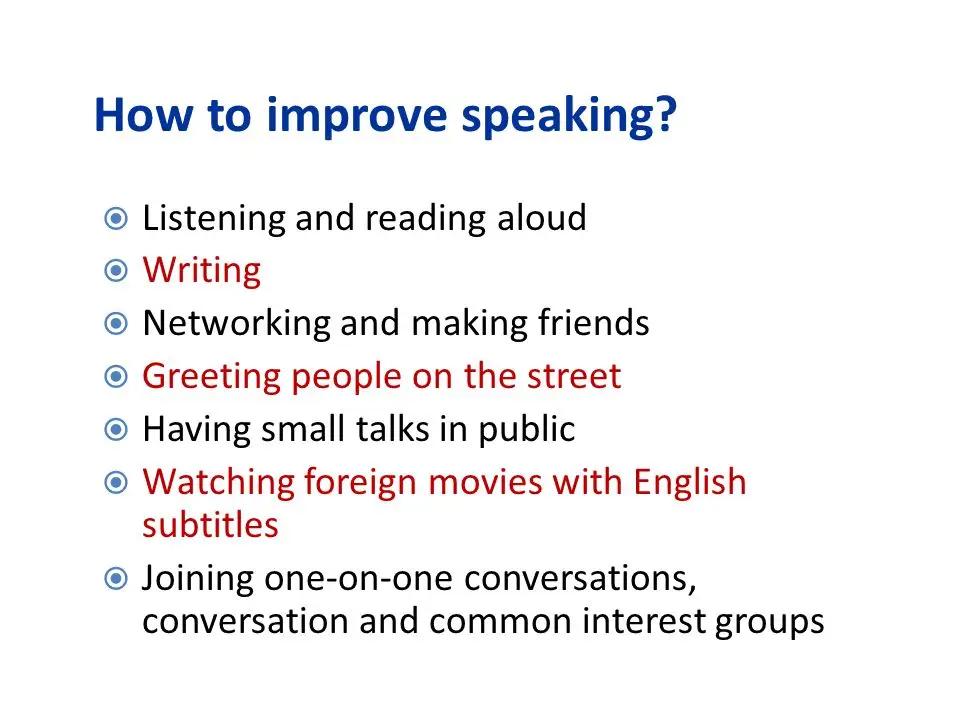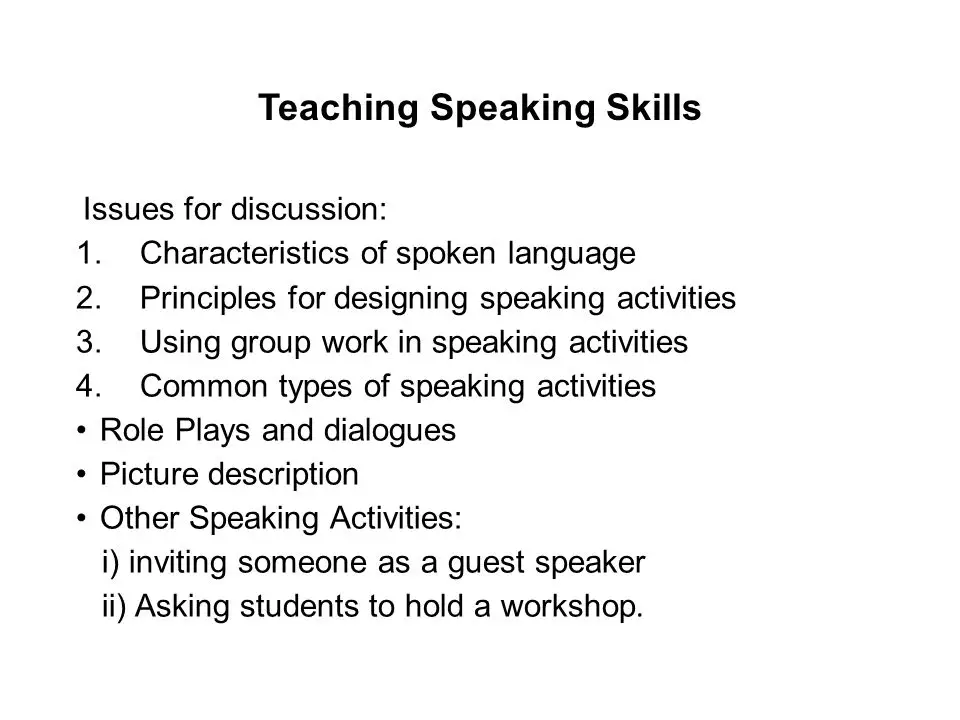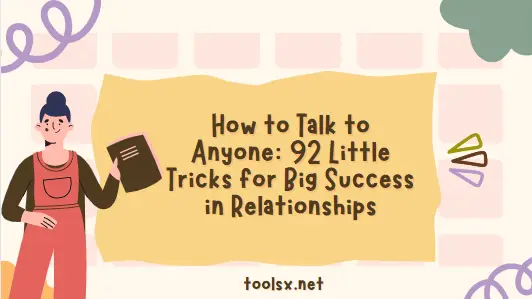In today’s fast-paced world, the ability to communicate effectively is more crucial than ever. Whether it’s in our personal lives, our work environments, or even during casual encounters, the art of conversation can significantly influence our relationships and the opportunities we encounter. “How to Talk to Anyone: 92 Little Tricks for Big Success in Relationships” sheds light on this very art, offering readers invaluable insights into becoming proficient conversationalists. From mastering nonverbal cues to employing humor strategically, this article delves deep into the essence of impactful communication. So, let’s embark on this journey to uncover the secrets to enhancing our dialogue skills, ensuring that we leave lasting impressions and forge meaningful connections wherever we go.
Understanding the Art of Conversation
Ah, conversation – that delightful dance of words and expressions! It’s the bridge that connects us, fostering understanding and camaraderie. Yet, so many of us find ourselves at a loss for words or ensnared in awkward silences. Fear not, for the journey to becoming a communication maestro is paved with little tricks and foundational principles that can transform even the most timid talker into a confident conversationalist.
Nonverbal Communication: The Unspoken Dialogue
Before uttering a single word, we’ve already begun the conversation. How? Through our nonverbal cues – those subtle (and sometimes not-so-subtle) gestures, expressions, and movements that speak volumes. An arched eyebrow, a warm smile, or a firm handshake can convey trust, openness, and confidence, setting the stage for a positive interaction. Remember, it’s not just what you say but how you say it that leaves a lasting impression.
Active Listening: More Than Just Hearing

Listening – truly listening – is a skill often overlooked in our quest to be heard. Active listening involves engaging with the speaker, showing interest, and responding appropriately. It’s about hearing the words and understanding the emotions and intentions behind them. By practicing active listening, you not only gain insights but also build stronger rapport with your conversation partner.
To delve deeper into developing active listening skills, check out Mind Tools.
The Power of Mirroring: Reflecting Success
Ever notice how close friends or colleagues tend to adopt similar gestures or speech patterns? This phenomenon, known as mirroring, is a powerful tool in building connection and rapport. By subtly mimicking the body language, tone, or speech patterns of your conversation partner, you create a sense of familiarity and comfort, making the exchange more pleasant and productive.
Exploring types of nonverbal communication can further enhance your ability to connect with others. Verywell Mind offers a comprehensive overview.
The Foundations of Communication
Diving deeper into the art of conversation, it’s time to explore the cornerstone upon which meaningful interactions are built. These foundational skills are your toolkit, essential for navigating the vast sea of social exchanges with grace and efficacy. Let’s unravel these skills further, shall we?
Nonverbal Communication: The Unspoken Dialogue
The power of nonverbal communication cannot be overstated. It’s the orchestra playing behind the scenes, adding depth and emotion to the words we speak. An encouraging nod, a thoughtful frown, or even the way we position ourselves in a room, all contribute to the narrative we’re sharing. To truly connect with others, it’s crucial to be mindful of these silent signals, ensuring our body language aligns with our intentions. After all, a genuine smile can often say more than a thousand words.
Active Listening: More Than Just Hearing
The magic of active listening lies in its simplicity and its complexity. On the surface, it’s about giving your undivided attention to the speaker, but dive deeper, and you’ll find it’s an art form in itself. It’s about listening with empathy, understanding the context, and responding in a way that validates the speaker’s feelings and viewpoints. When you actively listen, you’re not just waiting for your turn to speak; you’re truly engaged in what’s being shared, fostering a deeper connection and mutual respect.
The Power of Mirroring: Reflecting Success

Mirroring is a subtle yet profound way to establish rapport and make your conversation partner feel understood and valued. It involves adopting similar body language, speech patterns, or emotional states as the person you’re interacting with. This doesn’t mean copying every move they make but rather, reflecting a general sense of empathy and alignment. When done correctly, mirroring can significantly enhance the quality of the interaction, making it more fluid and harmonious.
In mastering these foundational communication skills, you’re not just learning to converse; you’re learning to connect on a deeper level. These skills lay the groundwork for more advanced techniques and tricks that can elevate your conversational prowess to new heights. As we continue our journey into the realm of effective communication, remember that practice makes perfect. The more you engage with these principles, the more natural they will become, transforming every interaction into an opportunity for connection and growth.
The Little Tricks for Big Success
Diving deeper into the art of conversation, we encounter a treasure trove of subtle yet powerful techniques that can dramatically enhance our interactions. These “little tricks” are not just about talking; they’re about connecting, understanding, and influencing in a positive way. Let’s explore how we can make every conversation count, ensuring it’s not just chatter but a meaningful exchange.
Making a Lasting First Impression
They say you never get a second chance to make a first impression, and how true that is! A first impression is formed within seconds, making it imperative to start on the right foot. A genuine smile, direct eye contact, and a presentable appearance are your first tools in your conversational toolkit. These elements convey confidence, openness, and respect, paving the way for a positive interaction. Remember, first impressions stick, so make them count!
Building Rapport: Finding Common Ground
Rapport is the secret sauce of effective communication. It’s what turns a simple exchange into a connection. One of the most reliable ways to build rapport is by finding common ground. This could be shared interests, mutual acquaintances, or even similar experiences. By identifying these points of connection, you create a foundation of trust and understanding. Don’t be afraid to ask open-ended questions; they’re like keys that unlock the treasure chest of your conversation partner’s personality and preferences.
Mastering Conversations: From Small Talk to Big Talk

Small talk often gets a bad rap, but it’s an essential stepping stone to deeper, more significant conversations. The trick is to transition smoothly from casual banter to more substantial topics. Listen keenly for cues or interests expressed by your conversation partner that can lead to “big talk.” When you steer the conversation towards topics of mutual interest or importance, you not only learn more about the other person but also share a part of yourself. This mutual exchange is where relationships deepen and connections are solidified.
Through these nuanced strategies, we can navigate the complexities of human interaction with grace and effectiveness. Implementing these little tricks does not require manipulation or deceit; rather, it’s about enhancing our natural ability to communicate and connect. As we continue to explore the art of conversation, remember that each interaction is an opportunity to learn, grow, and enrich both our lives and those of others. Stay tuned as we delve into advanced communication techniques in the next part, further unlocking the secrets to becoming a master conversationalist.
Advanced Communication Techniques
Elevating our conversation skills involves not just mastering the basics but also integrating more sophisticated strategies into our interactions. These advanced techniques can help us navigate complex conversations, read between the lines, and add an extra layer of depth to our communications. Let’s dive into these strategies to further refine our conversational prowess.
Reading Between the Lines: Understanding Body Language
Body language is a critical component of communication, often conveying more than words themselves. It’s the subtle shifts in posture, the fleeting expressions, and the unconscious gestures that reveal true feelings and intentions. By developing an ability to read body language, we gain insights into what the other person is really thinking and feeling. This awareness allows us to adjust our approach, ensuring our messages are received in the way we intend. To enhance your skills, observe closely and empathize, connecting with the underlying emotions being communicated nonverbally.
Humor: The Secret Weapon in Conversations
Humor is a powerful tool in any conversationalist’s arsenal. It can break the ice, ease tension, and create a bond between people. However, using humor effectively requires timing, sensitivity, and a bit of creativity. The key is to ensure that your humor is inclusive, never at someone else’s expense, and appropriate to the situation. When used judiciously, humor can lighten the mood, making difficult conversations more manageable and enhancing the overall enjoyment of the interaction.
By incorporating these advanced techniques into your communication repertoire, you not only become more adept at interpreting the subtleties of interaction but also more effective at influencing and engaging with others. Whether it’s through a better understanding of body language or the strategic use of humor, these skills can significantly improve the quality and depth of your conversations.
As we continue to explore the rich landscape of human communication, remember that each technique, from the foundational to the advanced, serves as a tool to build stronger, more meaningful connections. Stay tuned as we move forward, applying what we’ve learned to practical, real-world scenarios, ensuring that our conversations are not only successful but truly impactful.
Implementing the Techniques
After diving into the intricate world of communication techniques, from the foundational to the advanced, it’s time to bring these strategies to life. Implementation is where theory meets practice, and the true art of conversation unfolds in the richness of real-world interactions. Let’s explore how to apply these techniques in various scenarios, ensuring our conversations are not only engaging but also meaningful and effective.
Practical Applications and Real-World Scenarios
Mastering the art of conversation isn’t just about knowing what to do; it’s about knowing when and how to apply these techniques appropriately. Whether you’re networking in a professional setting, catching up with an old friend, or engaging in a difficult conversation, the principles of effective communication remain the same.
- In Professional Settings: Here, making a strong first impression and building rapport quickly can open doors to opportunities. Use positive body language and active listening to demonstrate your interest and commitment. Remember, finding common ground isn’t limited to personal interests; discussing shared professional goals and challenges can be equally effective.
- With Friends and Family: Conversations in these contexts are often more casual but no less important. Here, humor and empathy play crucial roles in strengthening bonds. Don’t shy away from using the little tricks to deepen connections, such as mirroring body language during heartfelt conversations or employing active listening to show genuine care and concern.
- During Difficult Conversations: These situations require a delicate balance of techniques. Nonverbal cues become even more critical, as does the need for active listening and empathy. Approach sensitive topics with an open mind and heart, using “I” statements to express your feelings without placing blame, and always strive for a constructive outcome.
Implementing these communication strategies effectively demands practice and a willingness to adapt based on the situation and the individuals involved. Remember, the goal is not to manipulate but to enhance understanding, connection, and mutual respect.
By integrating these techniques into our daily interactions, we not only improve our ability to communicate effectively but also enrich our relationships and the quality of our conversations. As we continue to practice and refine our skills, we’ll find that the art of conversation is a lifelong journey, one that is both rewarding and essential to our personal and professional growth. Stay tuned as we wrap up our exploration of effective communication, offering final thoughts and reflections on the journey of becoming a master conversationalist.
FAQs
In our journey to become adept conversationalists, many questions arise. These frequently asked questions (FAQs) reflect common curiosities and concerns people have as they navigate the complexities of communication. Let’s address some of these inquiries, providing clarity and further insights to enhance our understanding and skills.
How can I improve my conversation skills?
Improving conversation skills starts with a willingness to learn and practice. Begin by focusing on active listening, genuinely engaging with what others are saying rather than simply waiting for your turn to speak. Work on your nonverbal communication, ensuring that your body language reflects openness and interest. Seek out opportunities to converse with a wide range of people, and don’t be afraid to step outside your comfort zone. Reflect on your interactions, considering what went well and what could be improved. Remember, practice is key to developing any skill, including the art of conversation.
What are the best ways to make a good first impression?
Making a good first impression involves a combination of nonverbal cues and verbal communication. Smile genuinely, make eye contact, and offer a firm handshake to convey confidence and friendliness. Dress appropriately for the occasion, demonstrating respect and professionalism. Be mindful of your body language, ensuring it’s open and welcoming. Finally, be present in the conversation, showing interest in the other person by actively listening and engaging with what they’re saying.
How can I use body language to enhance my communication?
Body language can significantly enhance communication by reinforcing your verbal message or revealing your true feelings. To use body language effectively, maintain good eye contact to show attentiveness and respect. Use open body postures, such as uncrossed arms, to signal openness and receptivity. Mirror the body language of your conversation partner to build rapport and show empathy. Be aware of your gestures and facial expressions, ensuring they align with your words and convey the intended message.
These FAQs highlight just a few aspects of the broad and dynamic field of communication. By exploring these questions and seeking answers, we can continue to grow and improve as communicators, enriching our relationships and enhancing our ability to connect with others on a meaningful level. Stay curious, open to learning, and dedicated to practicing your skills, and you’ll find that the art of conversation is an endlessly rewarding pursuit.
Conclusion
As we conclude our exploration into the art of conversation, it’s clear that effective communication is both an art and a science. It encompasses a range of skills, from the foundational understanding of nonverbal cues and active listening to the more nuanced application of humor and empathy. Throughout this journey, we’ve uncovered the “little tricks” that can lead to big successes in relationships, offering practical advice and real-world applications to enhance our daily interactions.
In mastering the art of conversation, we unlock a world of possibilities. Improved communication skills can lead to stronger relationships, both personally and professionally, opening doors to new opportunities and deeper connections. It’s a journey that requires patience, practice, and a willingness to continually learn and adapt.
Remember, the essence of good conversation lies not in speaking but in being heard. It’s about creating a space where ideas can be exchanged freely, and understanding can flourish. As we apply the techniques discussed, let’s strive to engage in conversations that are not only successful but also meaningful and fulfilling.
In closing, consider the art of conversation as an ongoing journey, one that is endlessly enriching and profoundly impactful. Continue to nurture your skills, stay curious about the people you meet, and cherish the connections you make. For it is through our conversations that we reveal our humanity, bridge our differences, and build a more connected world.

